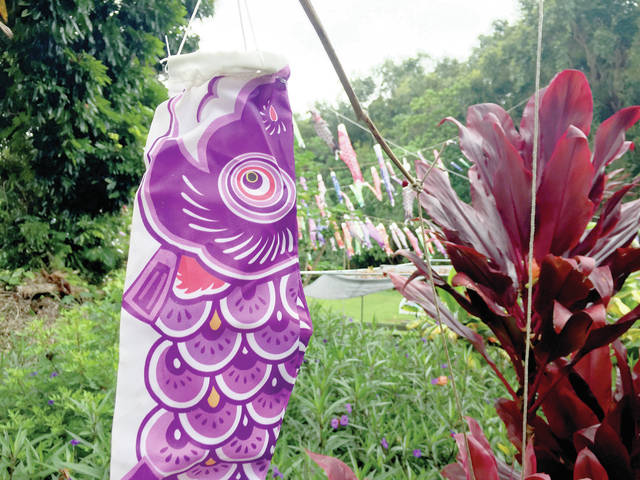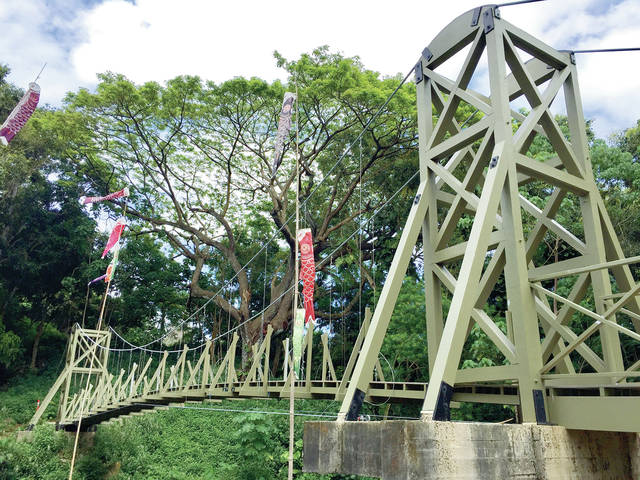The Kapaia Swinging Bridge is about to be traversed for the first time since it closed down nearly a dozen years ago.
The wooden pedestrian bridge just west of Hanamaulu was originally built in 1948. It is historically significant for transportation associated with sugar plantations and the multicultural heritage of the Kapaia Valley community, but was closed in 2006 due to safety concerns.
“It’s a historic bridge on the Hawaii Historic Register since 2008,” said Laraine Moriguchi, director of Kapaia Foundation. “From 2006 to 2017, we were trying to get it restored. Finally in 2017, the county said that they wanted to give the bridge to our non-profit Kapaia Foundation, which we formed in 2010 only because we were trying to save the bridge.”
The Kapaia Swinging Bridge Rebuild Project was funded by a $231,000 grant from the County of Kauai, along with donations from generous individuals. HD Construction, with the guidance of architect Ron Agor, has been busy working on rebuilding the footbridge since September.
Contractor Harry Duronslet and his team are following the 1948 plan, using as much of the existing material as possible.
The finished structure will look like the original but will be stronger and last longer.
“When they did all their trading, they’d come across this bridge,” said Joe Duronslet of HD Construction. “A lot of people who live down here and used this growing up really wanted to see it restored. … It’s another good attraction for people to come see and use.”
The swinging bridge is one of very few examples of suspension- bridge engineering in Hawaii. The 125-foot-long bridge will provide a 4-foot-wide pedestrian walkway comprised of wooden planks and girders crossing over Kapaia Stream. Two steel cables run the length of the bridge secured to concrete anchorages on either side and suspend the structure via a series of hangers located between two wooden towers fixed to concrete piers.
“A lot of people came to the area (on) Children’s Day on May 5th,” Moriguchi said. “Quite a few people were there to see the koinobori.”
Koinobori was brought to Hawaii by sugar plantation-era Japanese immigrants, and this location still proudly practices the tradition of flying colorful carp-shaped windsocks.
Kapaia Foundation’s koinobori display was inspired by the discovery of a 1935 photo showing the Japanese families of Kapaia celebrating Boy’s Day, today known as Children’s Day.
“It’s going to be open until the 23rd of May, so people can just come and go,” Moriguchi said of the Kapaia koinobori display.
After six years, Kapaia Foundation has reached its goal of flying 600 koi windsocks throughout Kapaia Valley, one for each person that lived in this community in its heyday during the 1930s and crossed the swinging bridge daily to and from work, church, school and play.
The bridge restoration hopes to preserve the rich history of Kapaia Valley and represent the connection of Hawaiian descendants with immigrant labor workers. A dedication and blessing for the historic bridge will be scheduled upon its completion.
“We have to thank all the people who helped and supported throughout the 11 years that we were working to get it rebuilt,” Moriguchi said.
“The contractor is doing a great job. They’re taking their time, but they’re doing a really nice job.”





EXcellent motivate and into reality, MAHALO Kapaia Ohana. Proud to have been a resident and bridge user!